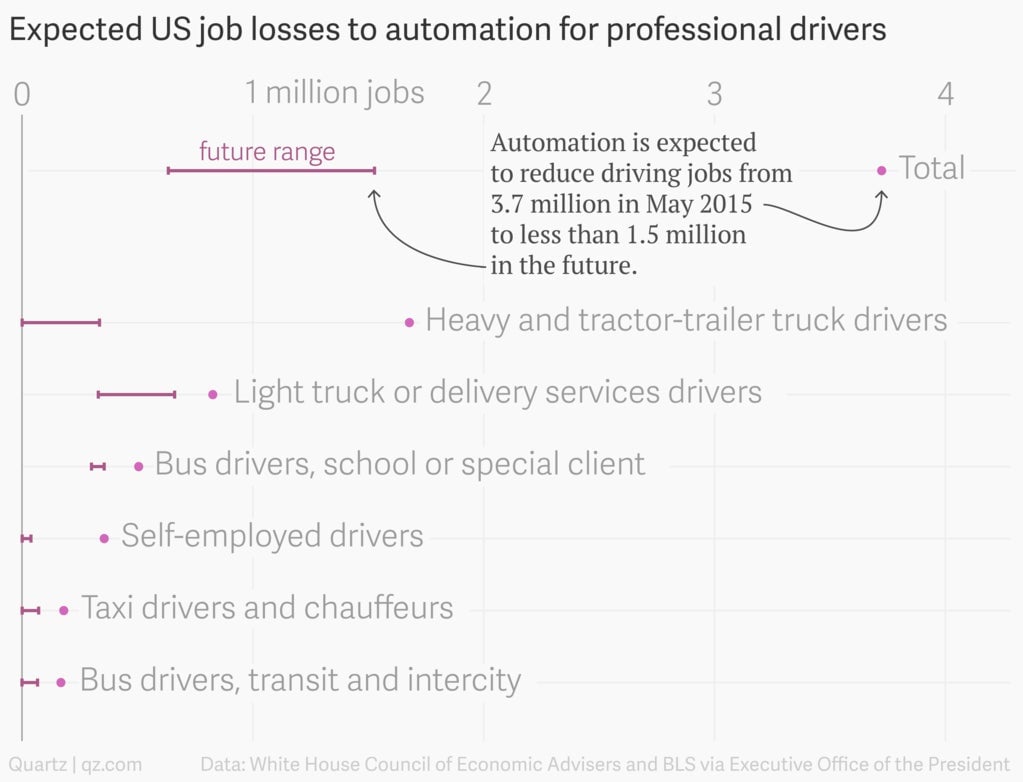The White House predicts nearly all truck, taxi, and delivery driver jobs will be automated
Like everyone else, the White House isn’t entirely sure how automation driven by advancements in artificial intelligence will affect the US economy. But the president’s office does feel confident about one thing: the outlook isn’t good for people who make their living as drivers.

Like everyone else, the White House isn’t entirely sure how automation driven by advancements in artificial intelligence will affect the US economy. But the president’s office does feel confident about one thing: the outlook isn’t good for people who make their living as drivers.
In a report published Tuesday, the White House estimated that nearly 3.1 million drivers working today could have their jobs automated by autonomous vehicles. However, the report doesn’t offer a timeline for when this automation could occur, just that the jobs as they exist now are at risk.
A bulk of the jobs come from heavy trucking, which the report estimates will see 80% to 100% of nearly 1.7 million drivers’ jobs automated. The White House predicts delivery drivers and self-employed drivers for on-demand services like Uber will face almost total automation as well.

The authors claim that new opportunities could arise due to falling transportation costs, and people who drive as only part of their job (like salespeople) could be more productive on the road. What those new jobs for truck or delivery drivers might be is ”not currently foreseeable.”
One wrinkle in that outlook is that trucking tends to pay better than other jobs that require a similar education level. The authors warn that, despite new opportunities that might arise over time, the federal government would likely have to provide services like “job search assistance, education, training and apprenticeships to build and certify new skills, and wage insurance” to insure drivers could make the same wages.
In response, the White House recommends an increase in education and training for jobs likely to thrive in an increasingly automated future—specifically science, technology, engineering, and math.
“If the United States fails to improve at educating children and retraining adults with the skills needed in an increasingly AI-driven economy,” the report reads. “The country risks leaving millions of Americans behind and losing its position as the global economic leader.”
This was the second report on automation and AI put together by a team from the Executive Office of the President, including staff of other councils and policy teams.